‘The West Ham Way’: to play an attacking, offensive brand of football. This is a philosophy being met with abundance from the current West Ham Academy. At the time of writing, the young Hammers side sit second in the Premier League 2 and are the joint second top scorers in the division this campaign.
Moreover, the Academy boys recently booked their place in the last 32 of the EFL Trophy after topping their qualifying group, which included EFL League One sides Bristol Rovers and Cheltenham Town, as well as EFL League Two outfit Newport County. Even more impressively, the West Ham Academy qualified with a 100% record.
It is apparent there exists a depth of talent in the youth set up at the East London side at present, given their current position and success in the cup competition. One prospect leading the headlines is the versatile forward Callum Marshall. Marshall is currently the top goal scorer in the league and was recently called up to the Northern Ireland first-team squad.
In this tactical analysis and scout report, we will provide an analysis of Marshall’s season so far. We will further highlight his qualities to demonstrate how he could be successfully utilised in the West Ham first-team squad. Moreover, we will assess the tactics and statistics of the EFL Championship sides to determine if any of the clubs would be a good fit for Marshall as a loan option in the next transfer window.
A versatile forward
At only 18 years of age, Marshall is making an impression in Premier League 2. The Northern Irish youngster is top of the goalscoring charts in the division with 13 goals this campaign, scoring at a rate of 1.71 goals per 90. To put into context, his goal rate per match is exceeding Harry Kane at present in his debut season for Bayern Munich in the Bundesliga. The England captain scoring 1.6 goals per 90.
Whilst there is obviously a difference in standard between the players’ respective divisions, it is demonstrated how potent Marshall has been this season. His goals have been highly valuable to the West Ham Academy, as his goal contribution has accounted for 54% of the East London sides’ total league goals this season. Moreover, if you factor in Marshall’s assists this campaign, the Northern Irishman has directly contributed to 63% of the West Ham Academy’s league goals.
Given the youngsters’ impressive statistics, it is no real surprise that he won the division’s September Player of the Month award and was also nominated for the same award in October. Marshall is proving that his goal return last season for the under-18s was no fluke when he netted 23 goals in 24 matches in all competitions. If Marshall can continue his current hot streak, he is projected to score even more this season.
The West Ham Academy are to play at least 20 games in the Premier League 2 this season. Therefore, with a minimum of 12 matches remaining, Marshall is projected to end the season with at least 33 goals.
Marshall’s goal contribution this season has not stopped in the league, as the 18-year-old has netted three goals, including one penalty, in three matches in the EFL Trophy.
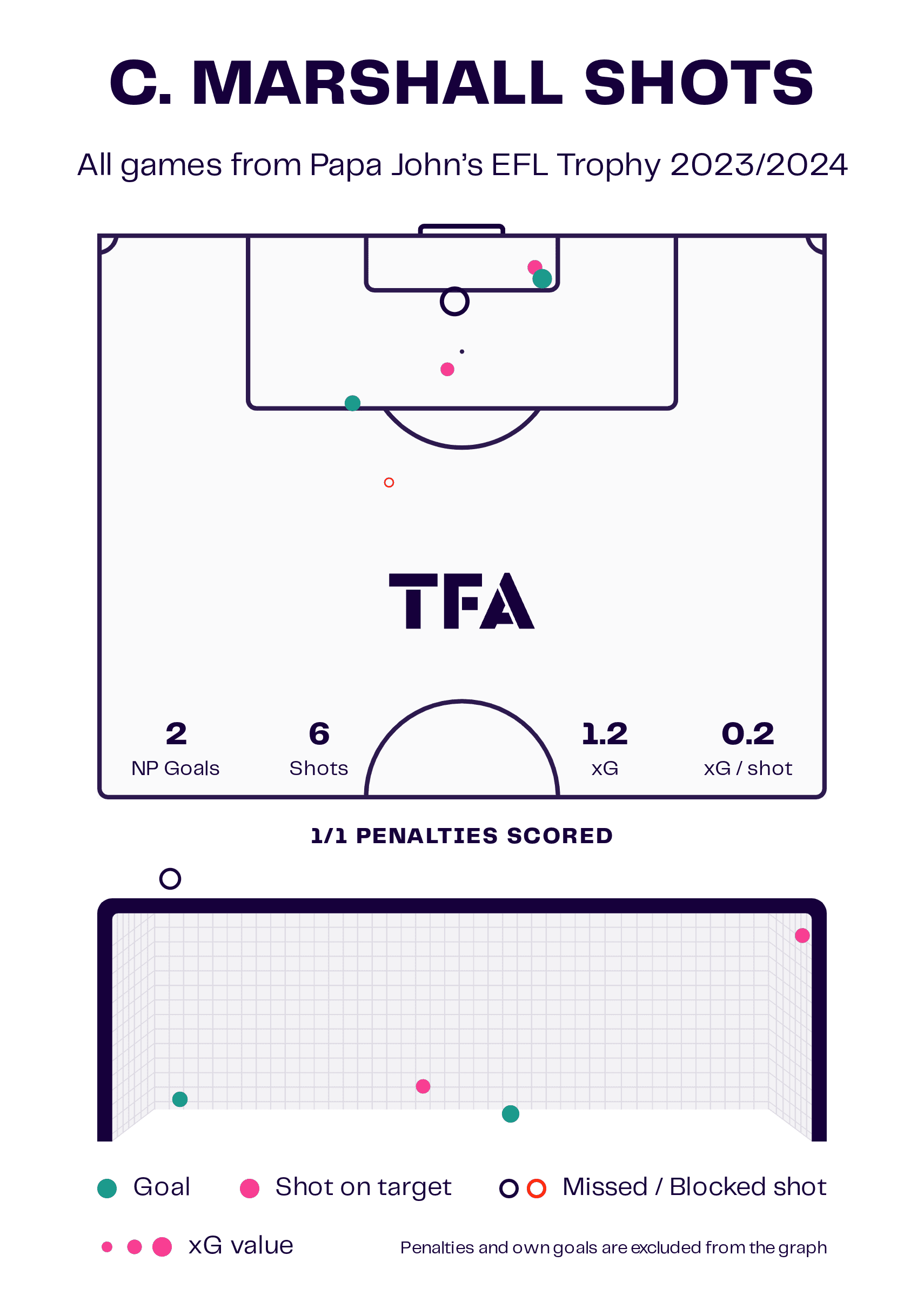
The graphic shows that Marshall has outperformed his expected goal tally in the EFL Trophy this season. The graphic further shows he has dispatched efforts with a high difficulty rating.
However, there is so much more to Marshall’s game than his goalscoring ability. Predominantly left-footed, the youngster is comfortable playing in any position across a front three and is unselfish with his play. He looks to make intelligent runs through the opposition’s defensive line and utilise his pace to drive the attacking phases of play.
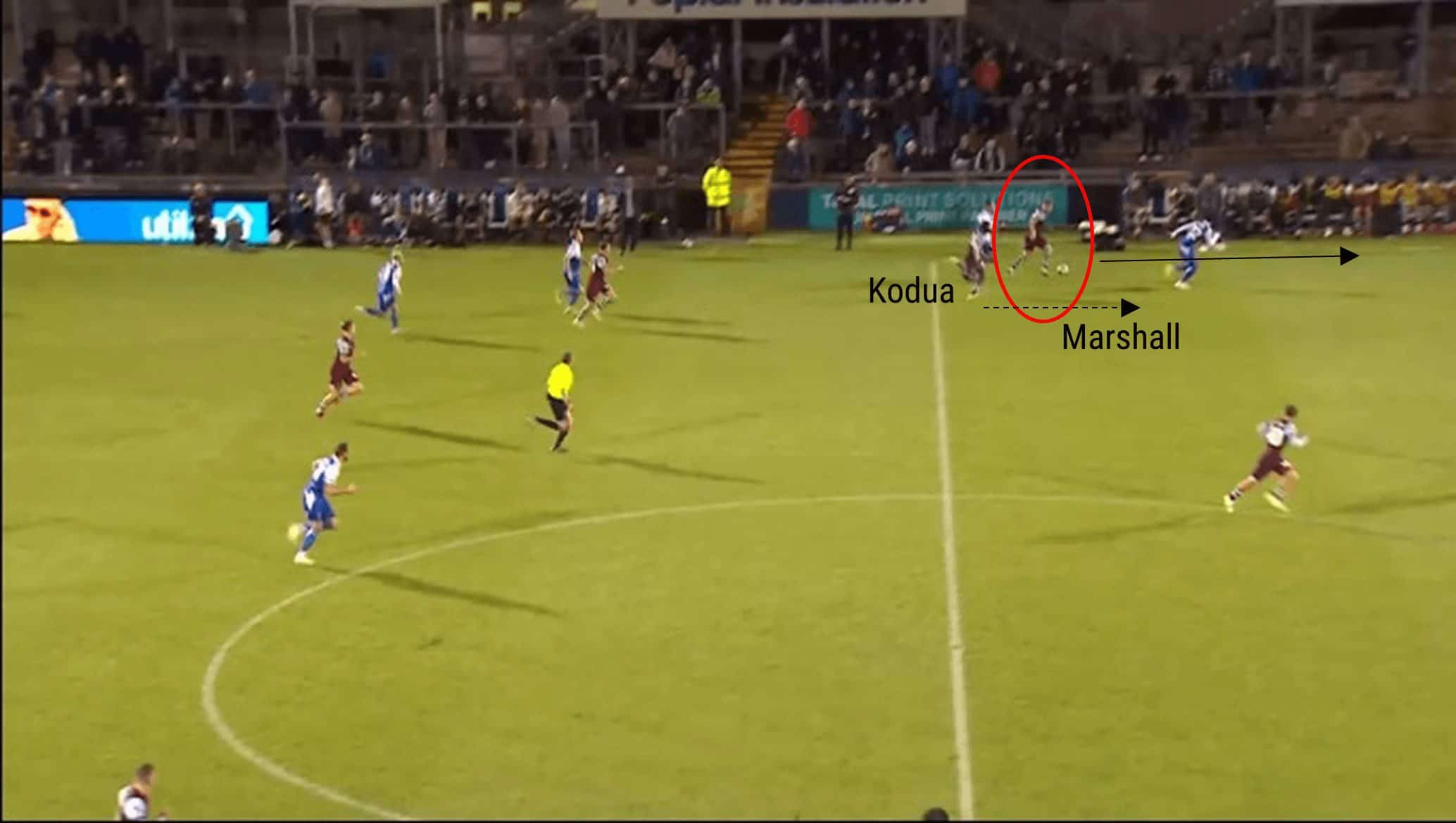
In the above image, having won possession, Marshall counterattacks and plays a through pass for his advancing teammate, Gideon Kodua.
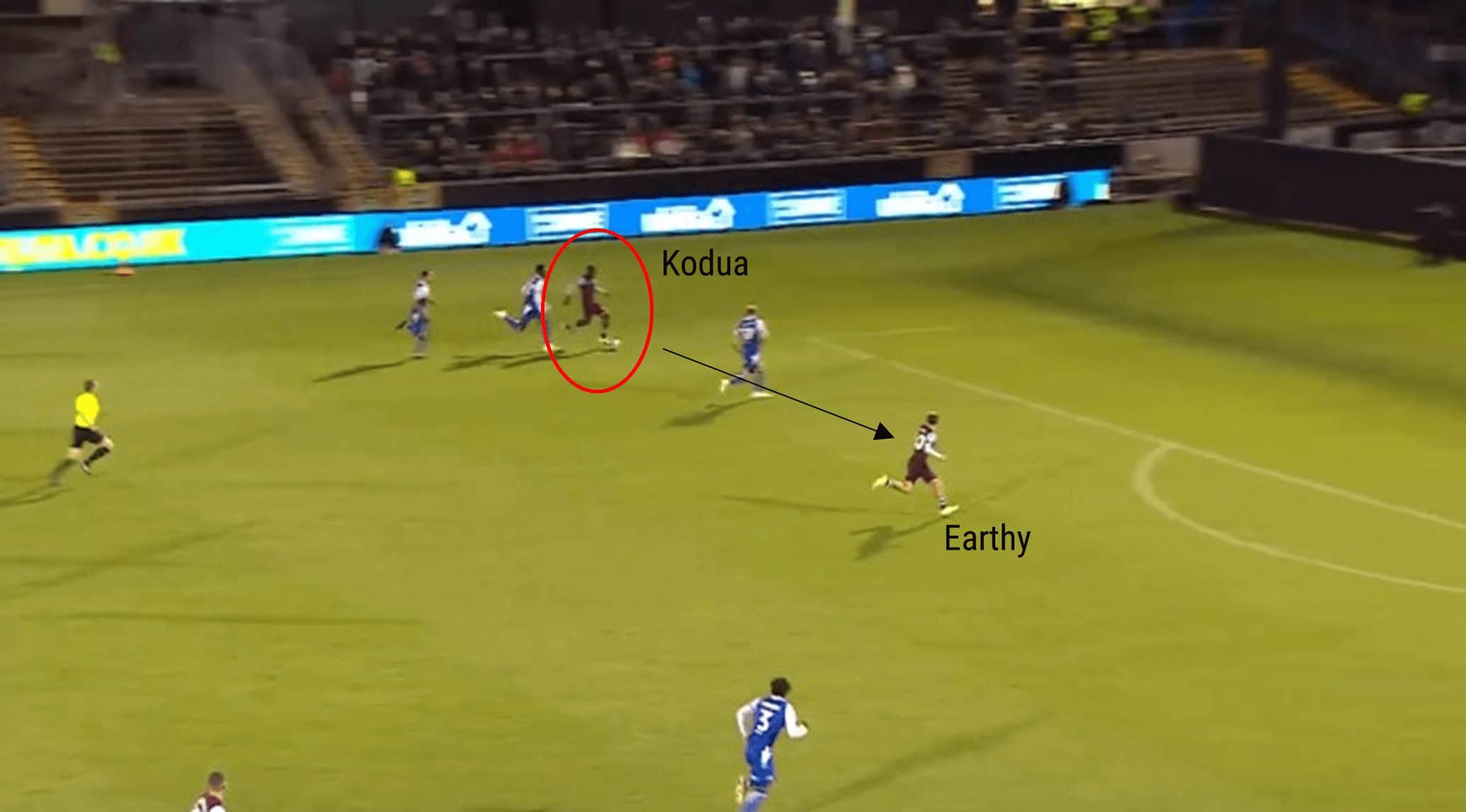
Kodua then plays a pass towards the unmarked George Earthy, who puts the Hammers into the lead, scoring their second goal of the game. The above example shows how adept Marshall is at playing on the counterattack, a style of play reminiscent of the West Ham first team.
Adapting to the West Ham first-team
David Moyes’ side had an excellent start to this season with impressive victories over the likes of Chelsea and Brighton. The Hammers predominantly set up in a 4-2-3-1 formation, playing a fast and direct style of play. They are the quickest side in the division in progressing the ball upfield, averaging 2.06 m/s.
Despite West Ham sitting in ninth position in the Premier League at the time of writing, they average only 42.1% possession per match. Only four teams in the league rank lower for average possession. In their 3-1 away victory at Brighton, the Hammers only had 22% possession, suggesting their style of play conforms with a counterattacking approach.
The Hammers’ allow their opposition dominance on the ball but are effective at intercepting the play.
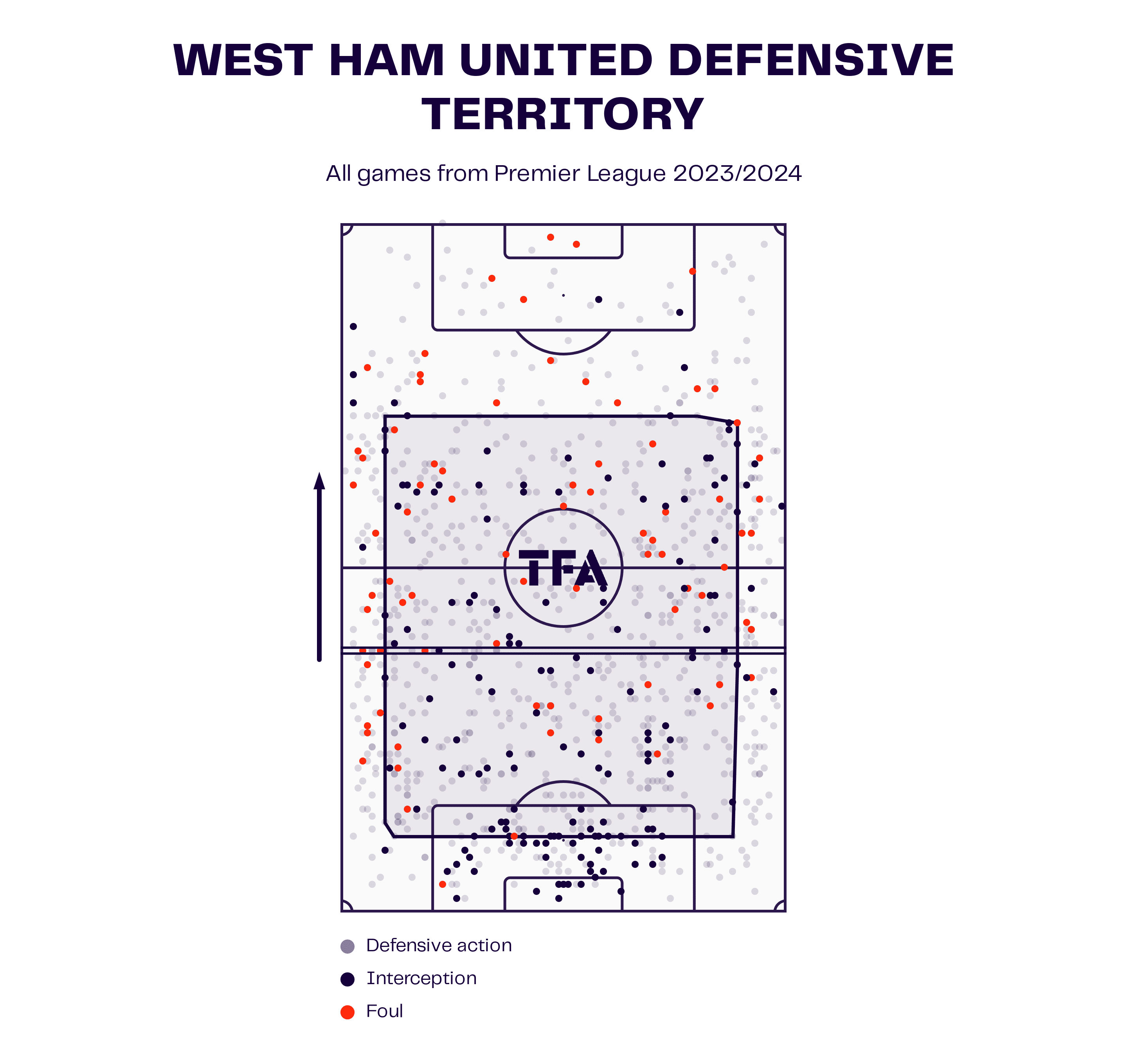
The graphic shows that West Ham don’t particularly adopt a high press as they often regain possession, intercepting the play in their defensive third and particularly in their own penalty box. Only Luton and Nottingham Forest have higher PPDA values than West Ham’s 16.7, indicating a lack of high press. In contrast, Moyes’ side ranks top in the division for interceptions, averaging 9.83 per 90.
Upon intercepting the play, the East London side looks to transition quickly to the attacking phase, utilising the pitch’s width and numerous players, including the full-backs, providing support around the lone striker.
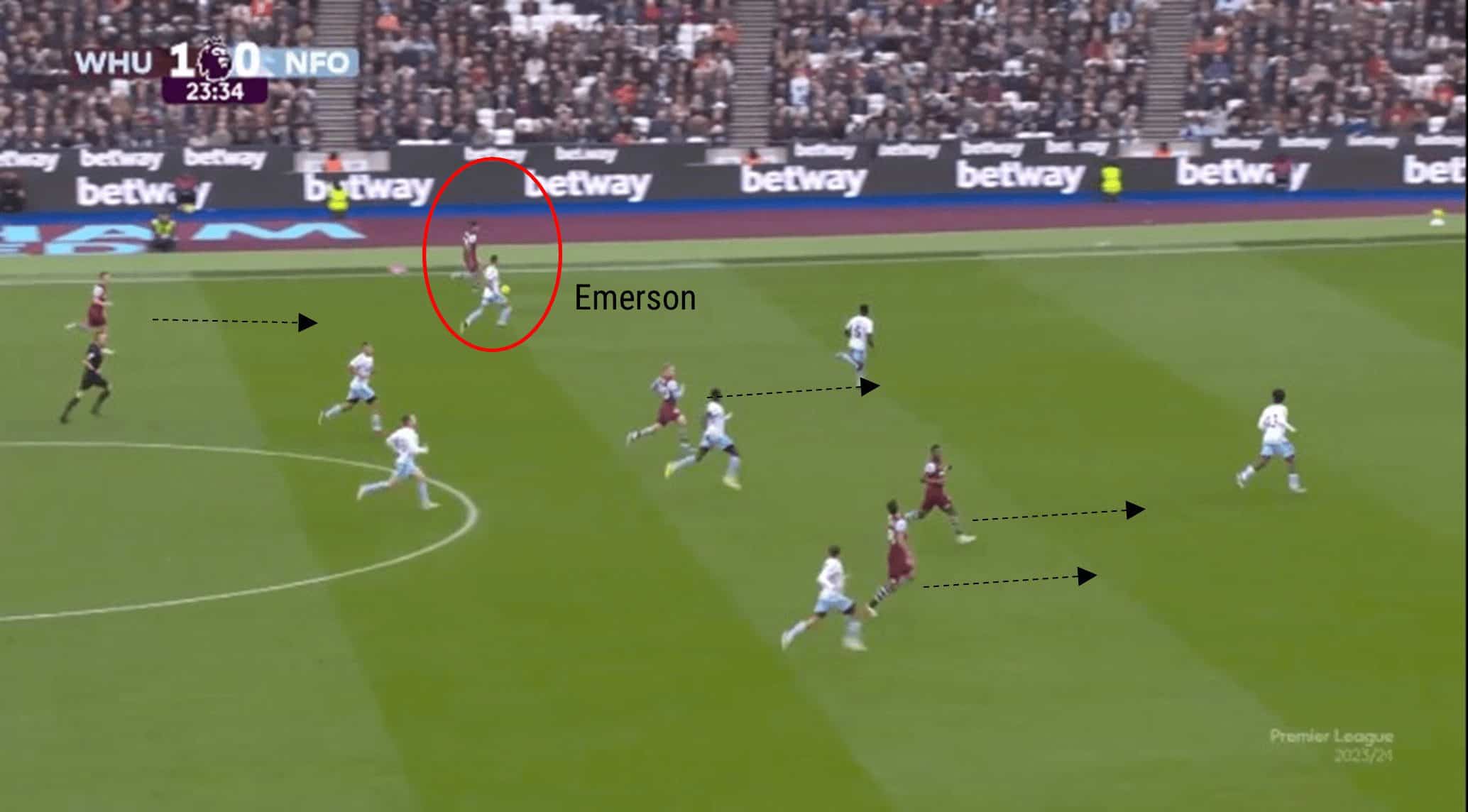
The left-back Emerson is shown sprinting with the ball, instigating a counterattack, and numerous West Ham players instinctively joined the attack. As West Ham counters in numbers, it relieves pressure on the lone striker, who in this case is Jarrod Bowen.
This style of play corresponds to Marshall’s attacking instinct.
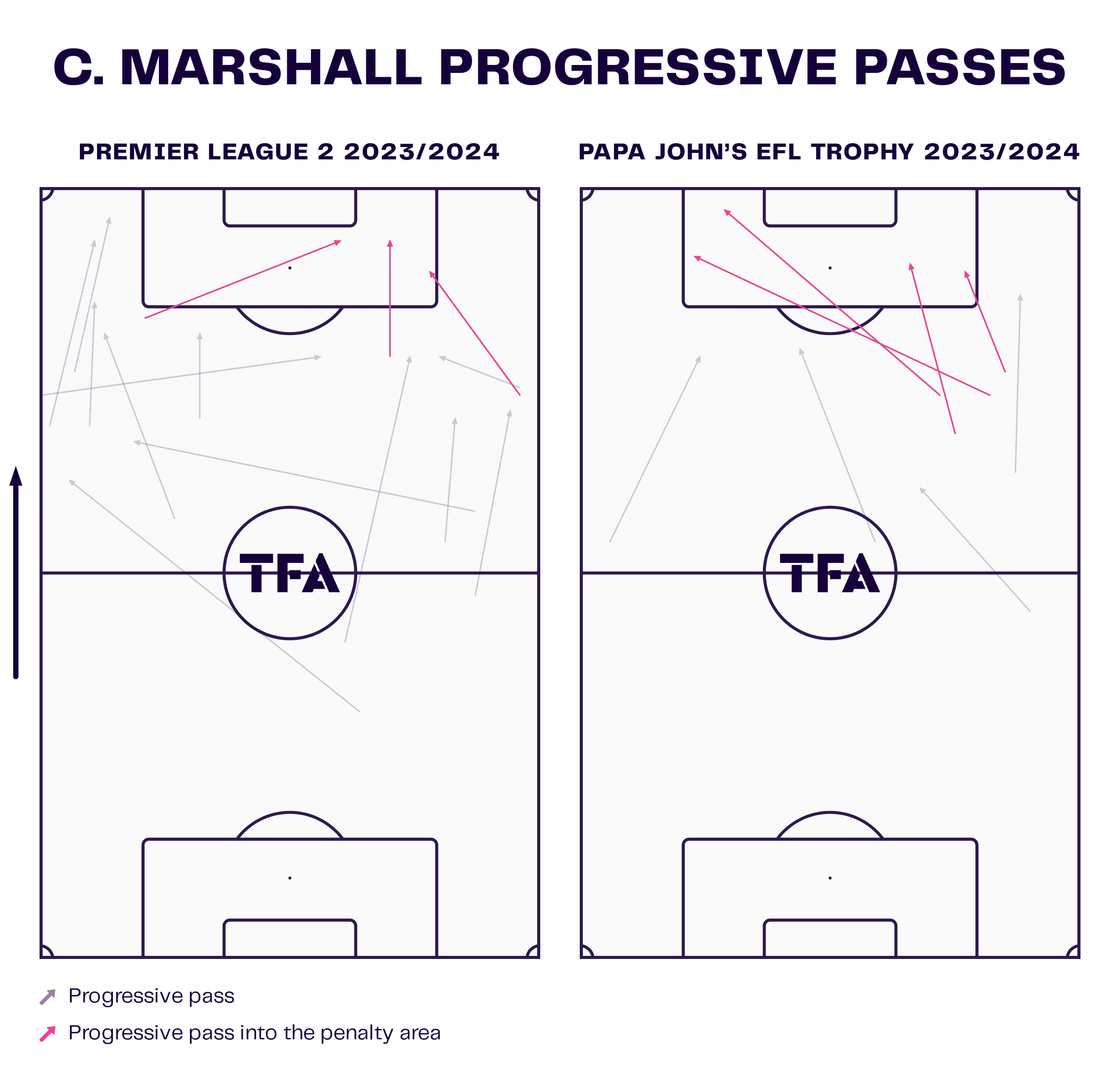
The graphic shows the forward-thinking nature of Marshall’s play as he often looks to pass into the channels as well as switch the play. His tendency to switch the play stands him in good stead for the West Ham first time, who complete 4.5 switches per 90, the highest in the league.
The youngster has a seemingly natural instinct to play the ball forward.
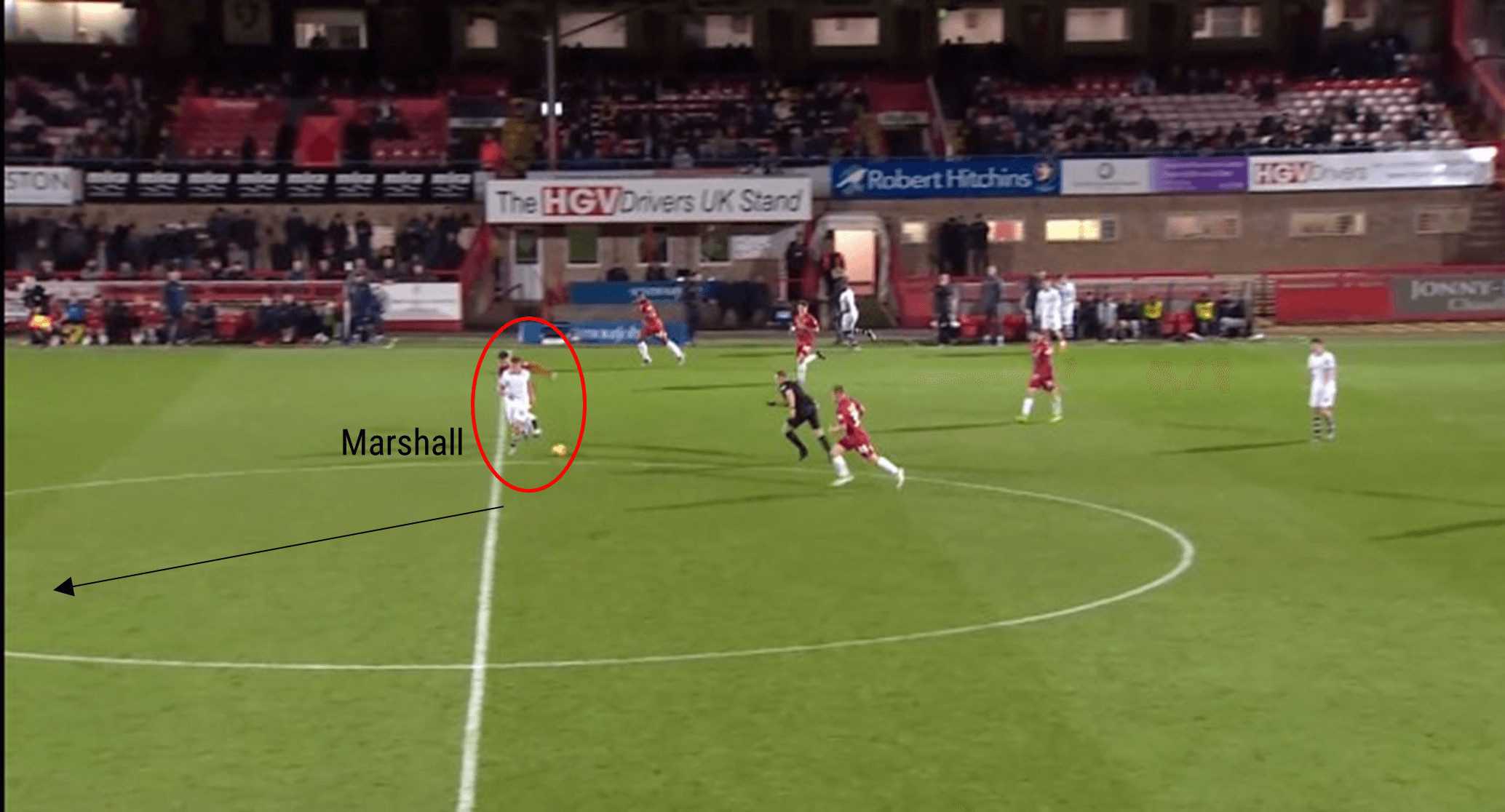
The match image shows that Marshall doesn’t just limit his play within the attacking third of the pitch, collecting the ball centrally. The youngster quickly turns to play a progressive pass.
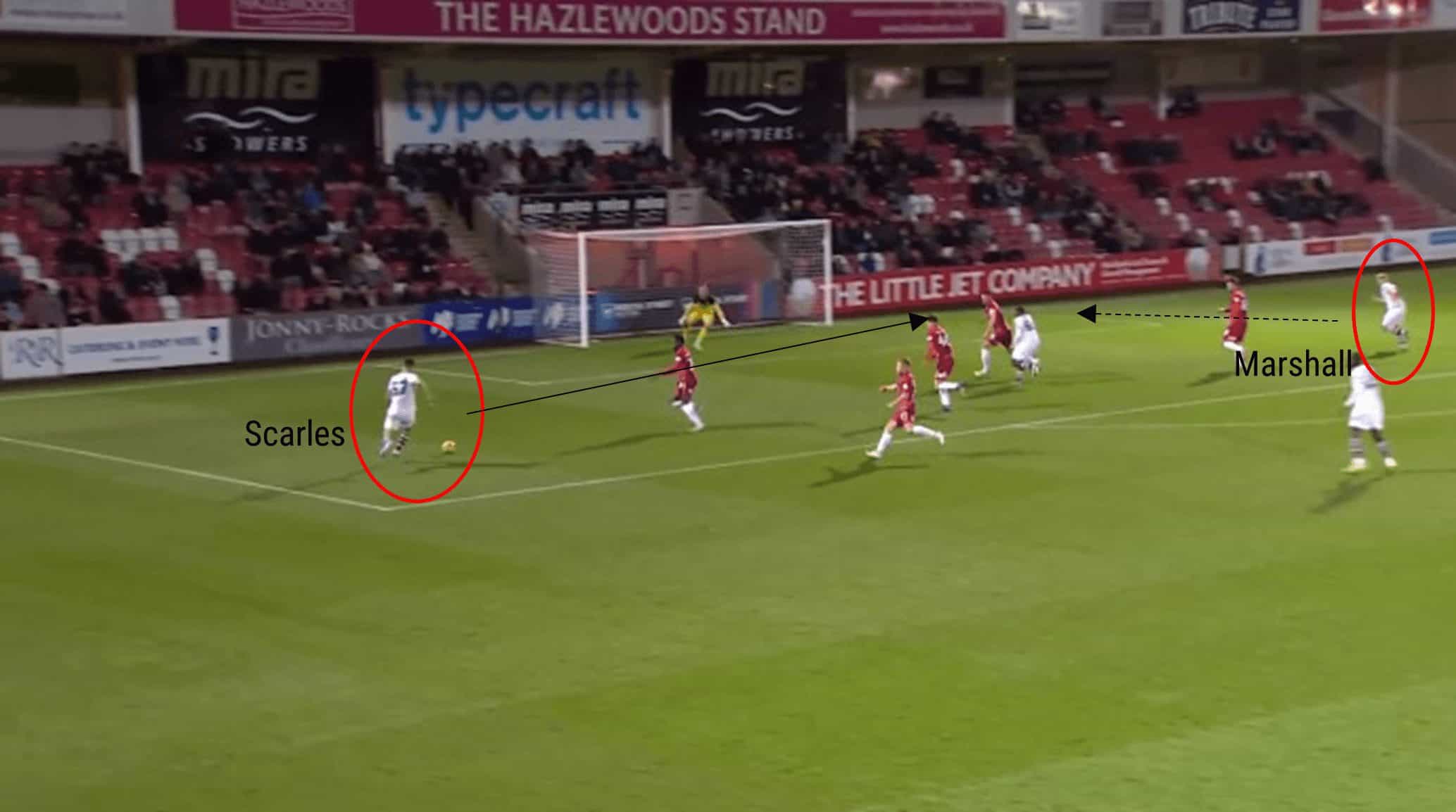
After distributing the ball, Marshall immediately runs towards the penalty area, where he eventually gets on the end of an Oliver Scarles cross to score the young Hammer’s fourth goal of the night.
It is demonstrated how the young Northern Irish international has the ability to adopt the quick, direct style of play favoured by the West Ham first team. Moyes may be wise to integrate the youngster into the first-team fold sooner rather than later.
There has been much contention over the forward role at West Ham over recent seasons. Significant transfer funds have been wasted on strikers who failed to make the grade, and Michail Antonio, who initially started his career as a right-back, has been transformed into a forward.
Antonio has struggled for consistency. His best league goal rate came in the 2019/20 season, averaging 0.51 goals per 90. West Ham’s other forward option is Danny Ings; however, the 31-year-old has rarely featured since his arrival from Aston Villa last January and has only registered two league goals for the club.
Moyes has experimented in the lone forward position in recent matches this season and has opted to deploy Bowen in the role despite his more natural position being on the wing.
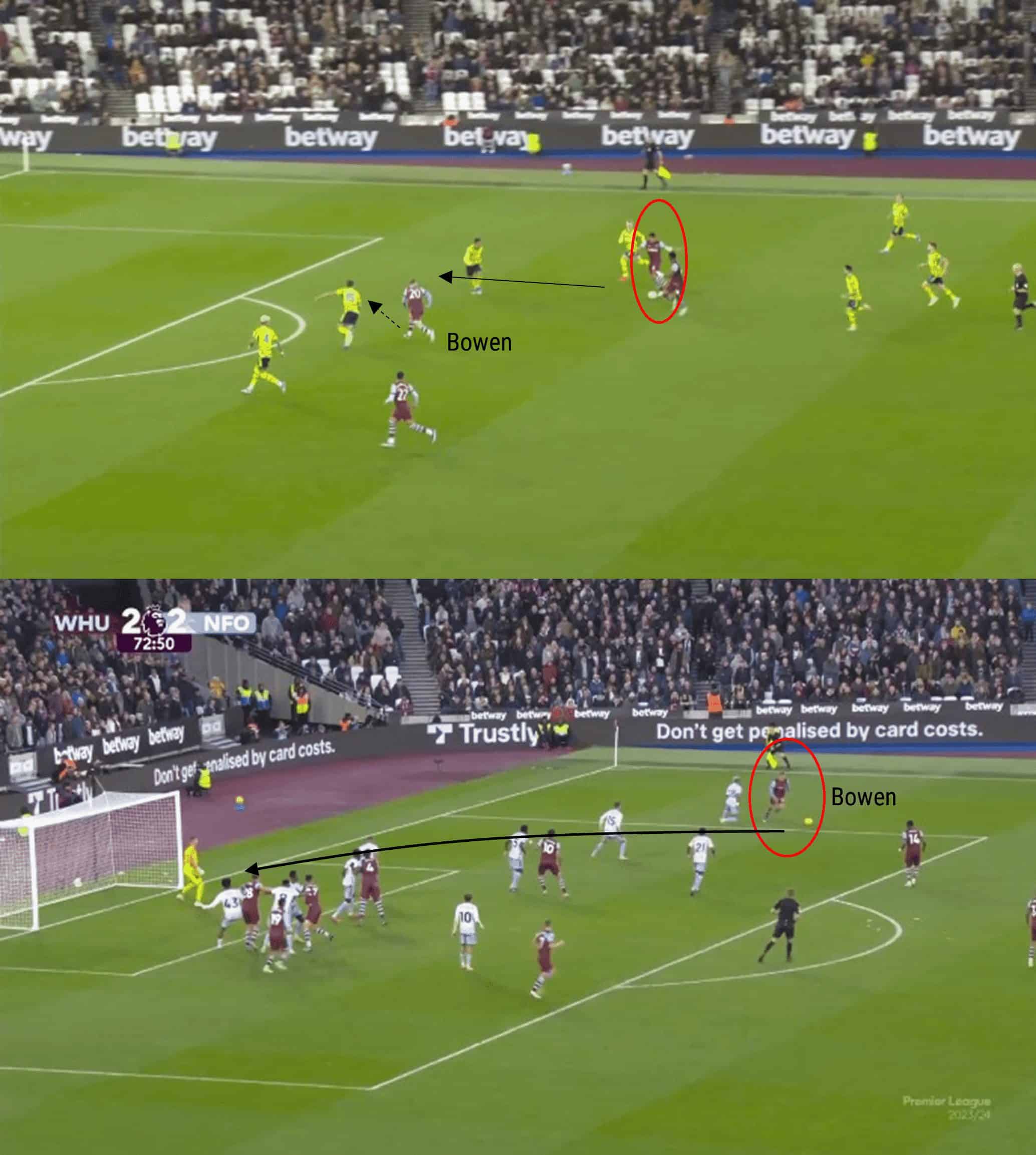
The match stills show a variety to Bowen’s game recently for the Hammers. The former Hull City player has been accustomed to making runs through the opposition’s backline, getting on the end of through balls, as well as providing width in the attacking phases of play.
Moyes favours having flexibility in his front line as it facilitates an unpredictable nature and provides a wealth of options going forward. As previously outlined, Marshall is a versatile forward who can play anywhere across the front line.
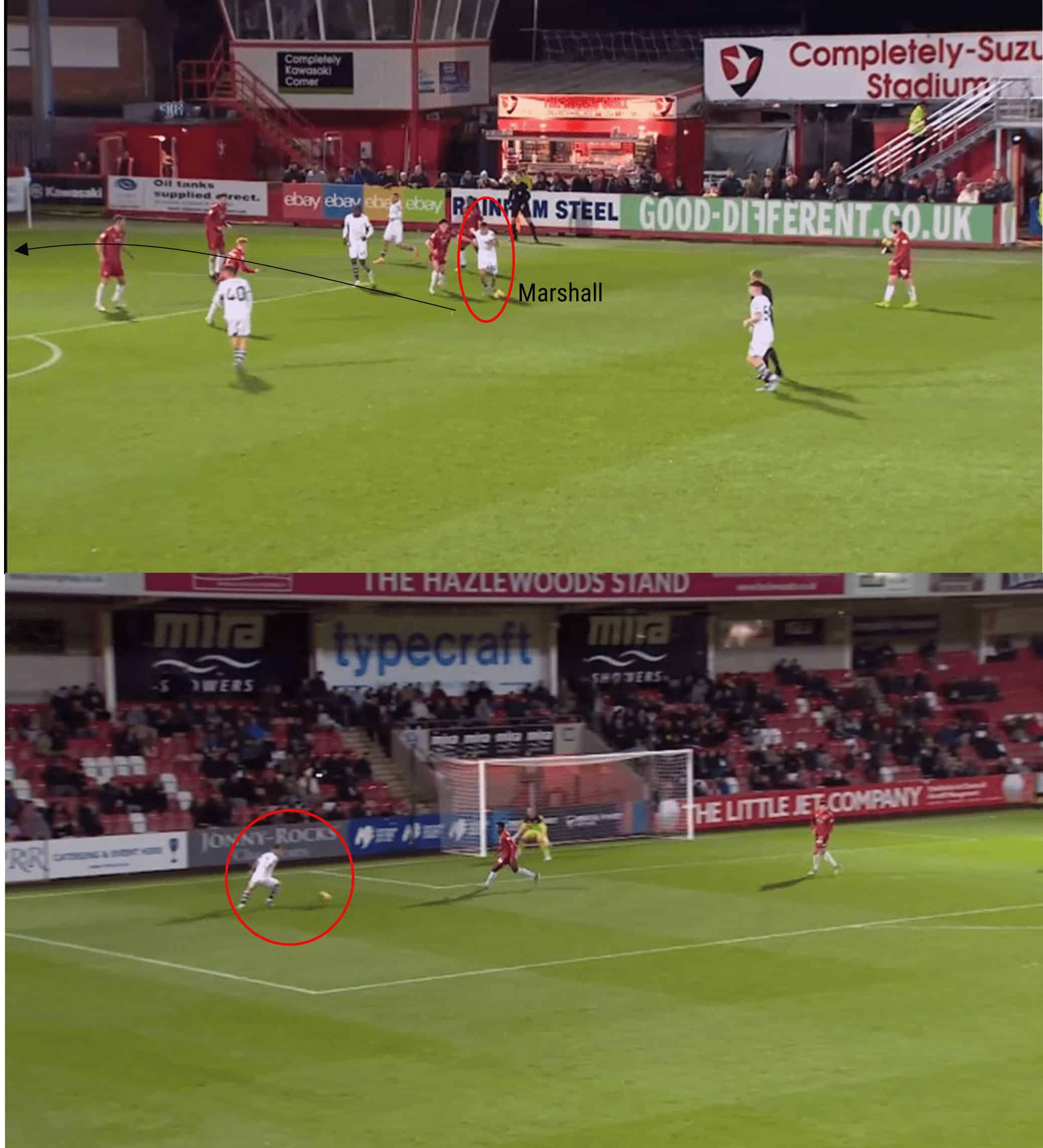
Although Marshall tends to produce more crosses when positioned on the left, he is just as adept on the right-hand side, given the opportunity. In the EFL trophy fixture against Cheltenham, Marshall started on the right-hand side in a 3-4-2-1 formation behind the lone striker, Divin Mubama. The images show Marshall cutting inside onto his preferred left foot to pick out his teammate in the penalty area successfully.
With Antonio’s contract due to expire at the end of this season and Ings having failed to make the starting XI consistently, it is logical that Moyes has explored his options up front. However, Bowen is not a natural centre forward, and despite enjoying some success in the role, he has ended up switching positions to the wing during matches.
In addition to the Premier League fixtures, West Ham are in the quarter-finals of the EFL Cup and are still competing in the Europa League, as well as their FA Cup journey due to commence in January. Therefore, the Hammers’ have a long season ahead of them, with plenty more matches still to play. It is conceivable that West Ham are likely to have to utilise their full squad as the season progresses.
Moreover, Mohammed Kudus is due to compete at the Africa Cup of Nations with Ghana, starting in January. This will ultimately lead to changes in the West Ham attack and potentially allow Marshall to impress.
It has been shown that Marshall possesses the attributes to ensure a seamless transition into the first-team fold. Alternatively, a loan option in the next transfer window may be viable to aid Marshall’s professional development.
Championship loan options
This season, Marshall is proving that he possesses the skill to compete with senior teams, given his performances in the EFL trophy. As with most young players, many Premier League teams look to send out their Academy prospects on loan to gain game time week in, and week out.
The Championship has a history of providing an environment where young players can gain vital playing experience. For example, Mason Mount had a loan spell at then-Championship side Derby County in the 2018/19 season at the age of 19 – one year older than Marshall now.
If West Ham do opt to send the youngster out on loan in January, it would be logical to preferably loan him to a side who play a similar brand of football to the Hammers.
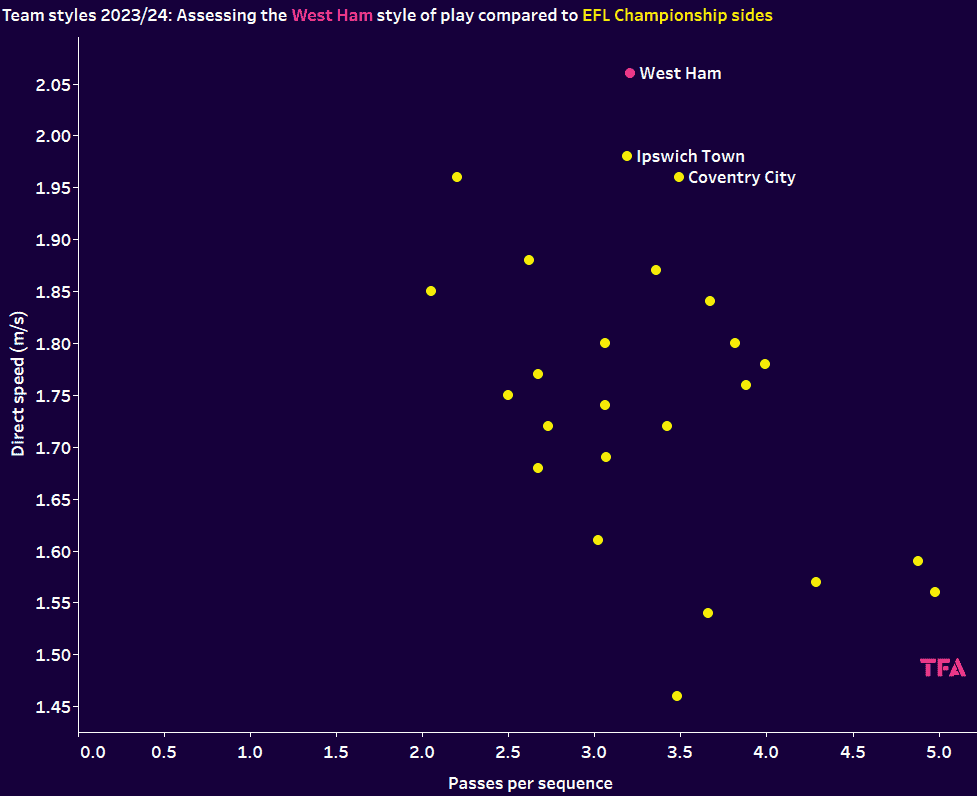
The scatter graph shows that the two sides playing styles most similar to Moyes’ side are Ipswich Town and Coventry City. Like West Ham, Ipswich often plays counterattacking football.
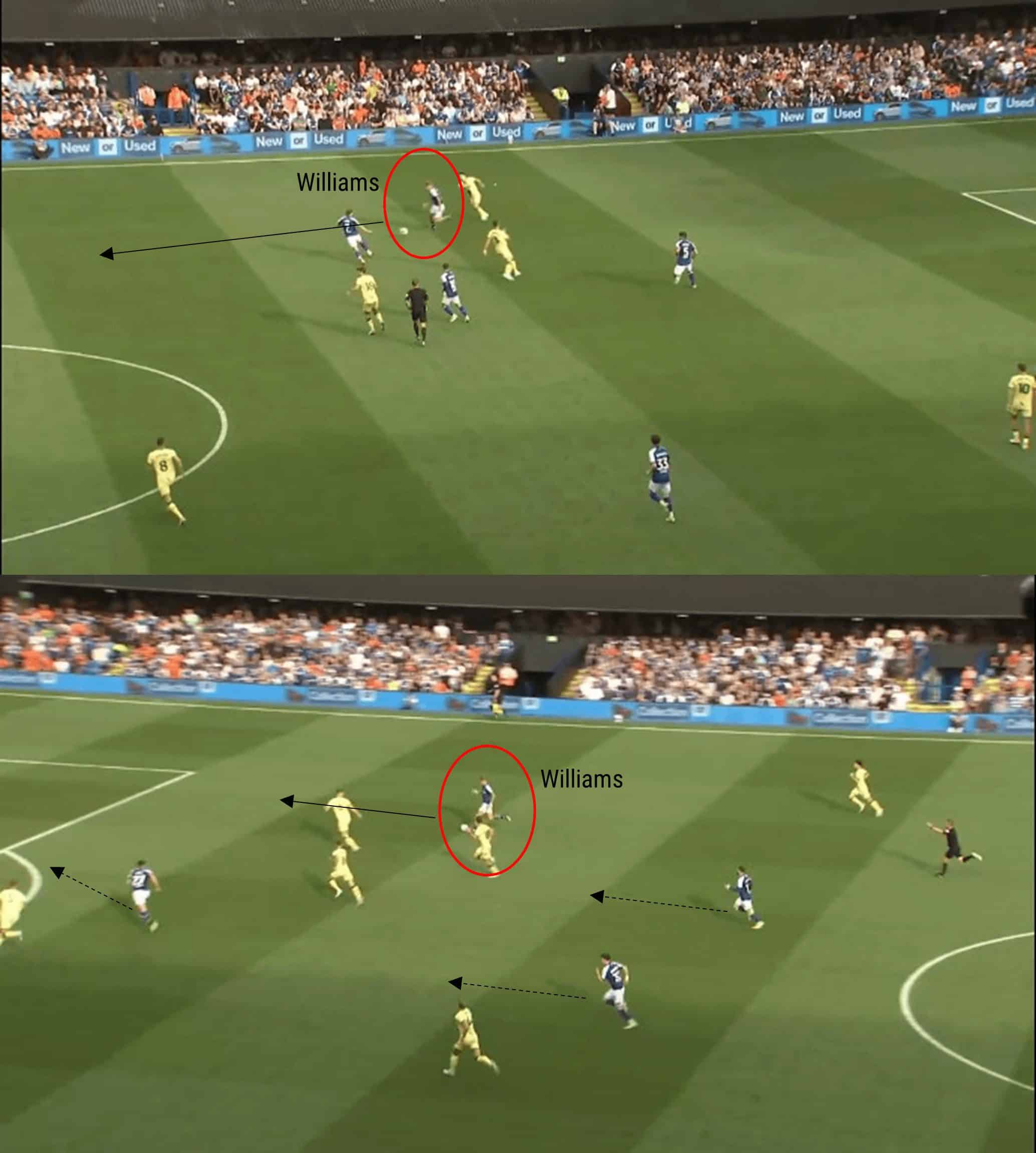
Brandon Williams has won possession back for Ipswich here and is seen joined by his teammates in quickly driving at the opposition defence. Williams eventually goes on to score. This direct play by McKenna’s side has been a common approach this season. Like West Ham, Ipswich don’t dominate possession in their attacking half.
Ipswich, however, already lie second in the division at the time of writing, joint-top with Leicester. Kieran McKenna’s side are the league’s top goalscorers with 36 goals, seven more than the joint-second top scorers, Leicester and Norwich. It is, therefore, plausible that the Tractor Boys may not be particularly in the market for a goalscorer.
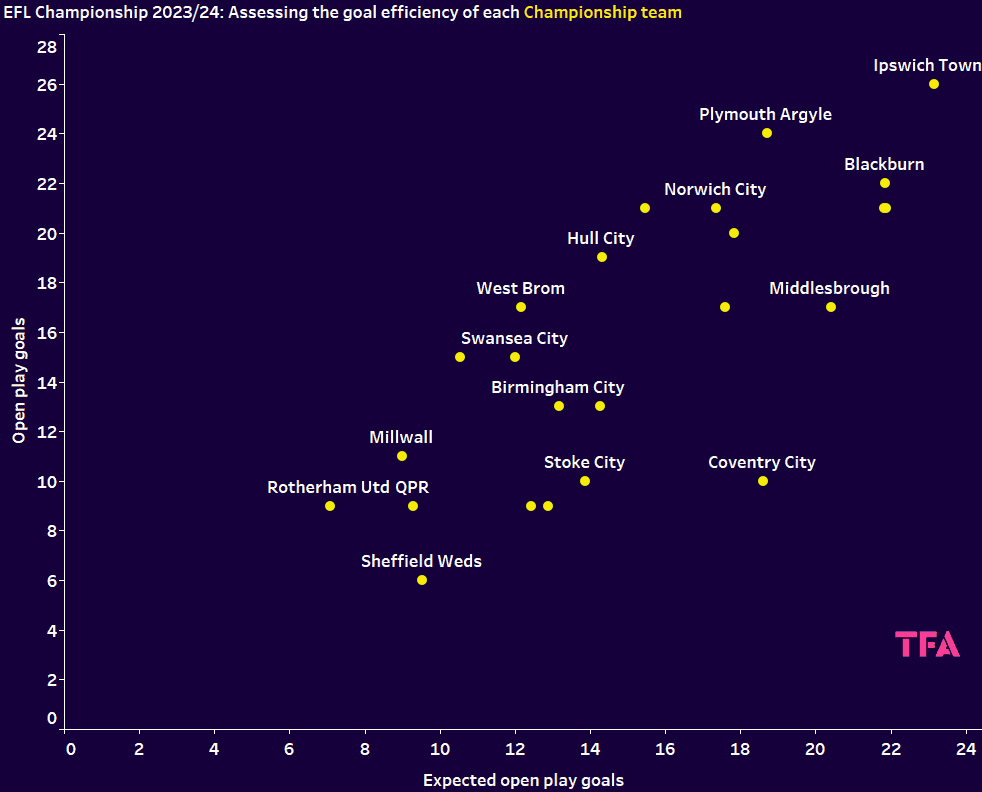
A review of the scatter plot shows Ipswich have scored 26 goals in open play in the league so far, more than their expected tally of 23.17. Therefore, the graph suggests the Suffolk side are performing well in this campaign. Nevertheless, as the season progresses, Ipswich may add depth to their squad as they chase promotion. If Marshall were recruited in January at Portman Road, he would be entering a cheerful dressing room.
Alternatively, this analysis has shown Coventry also plays a similar style of play to West Ham. In contrast to Ipswich, though, Coventry are in desperate need of some more firepower upfront. The scatter plot above shows the Sky Blues have scored 10 goals in open play in the Championship this season despite having been expected to score 18.61 goals in open play.
Unlike Ipswich, this suggests Mark Robin’s side has been underachieving. However, Coventry’s expected open-play goals figure is the seventh highest in the division. This indicates that they are actually getting in the correct positions but need to be more clinical.
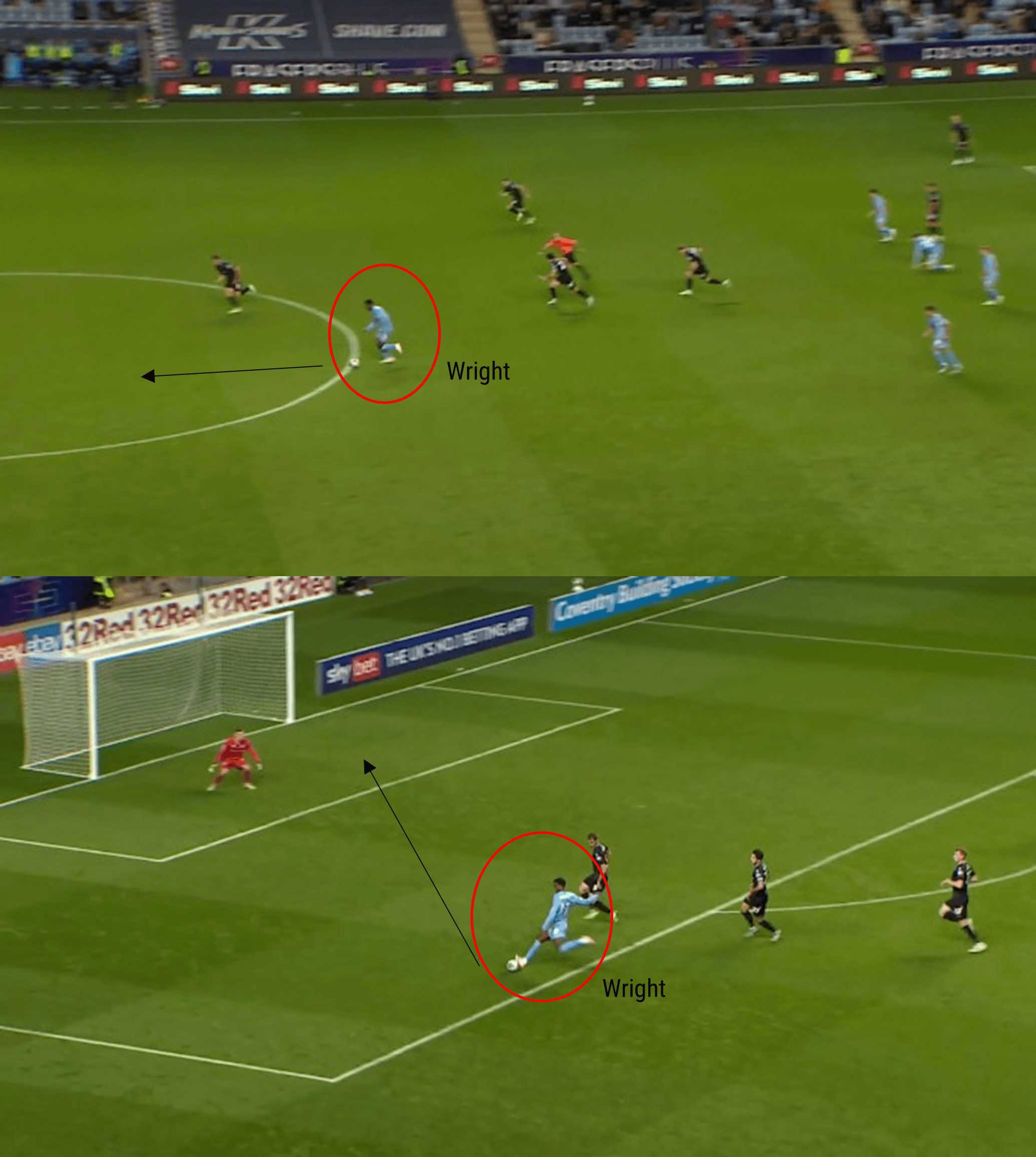
Haji Wright leads the break for Coventry here and is left with only one defender to beat. However, the summer signing is slow, and as the Blackburn defence catches up, the forward is forced into hitting a shot just inside the penalty area, which subsequently misses the target.
It is demonstrated that Coventry has been able to find themselves in promising attacking positions. To highlight their attacking play further, in their 2-0 defeat to Rotherham this season, they had an expected goals value of 2.47. In this instance, a clinical touch may have been the difference in turning defeat into victory. Marshall could be the answer to their goalscoring needs.
Conclusion
In this tactical analysis and scout report, we have demonstrated Marshall’s qualities and provided an overview of his successful season to date. This analysis has highlighted how the youngsters’ play conforms to the tactics implemented by Moyes in the first-team squad.
At only 18 years old, it remains to be seen whether Marshall will be given an opportunity in this campaign’s first team. However, his current performances are doing no harm to his chances. If the youngster can continue his excellent form, he will undoubtedly attract the attention of clubs, and this analysis has identified viable options for him to further his development. Regardless, with players like Marshall, West Ham fans can expect an attacking brand of football in the years to come.



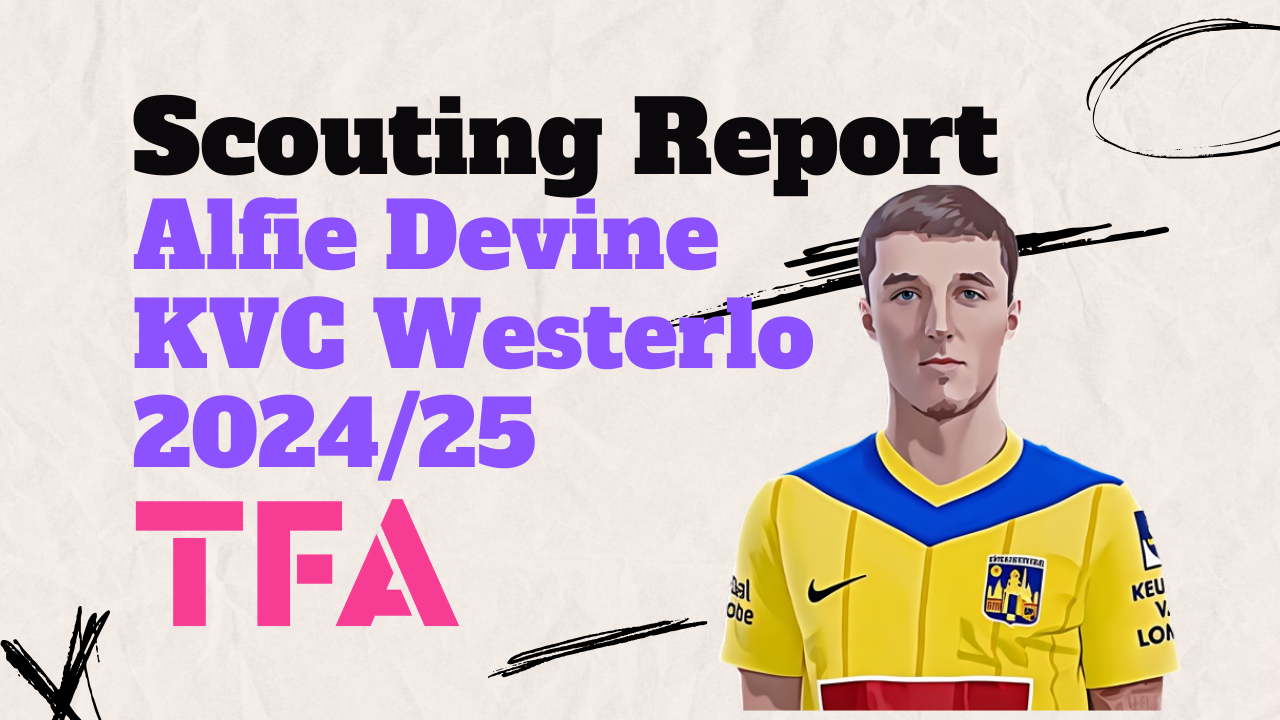
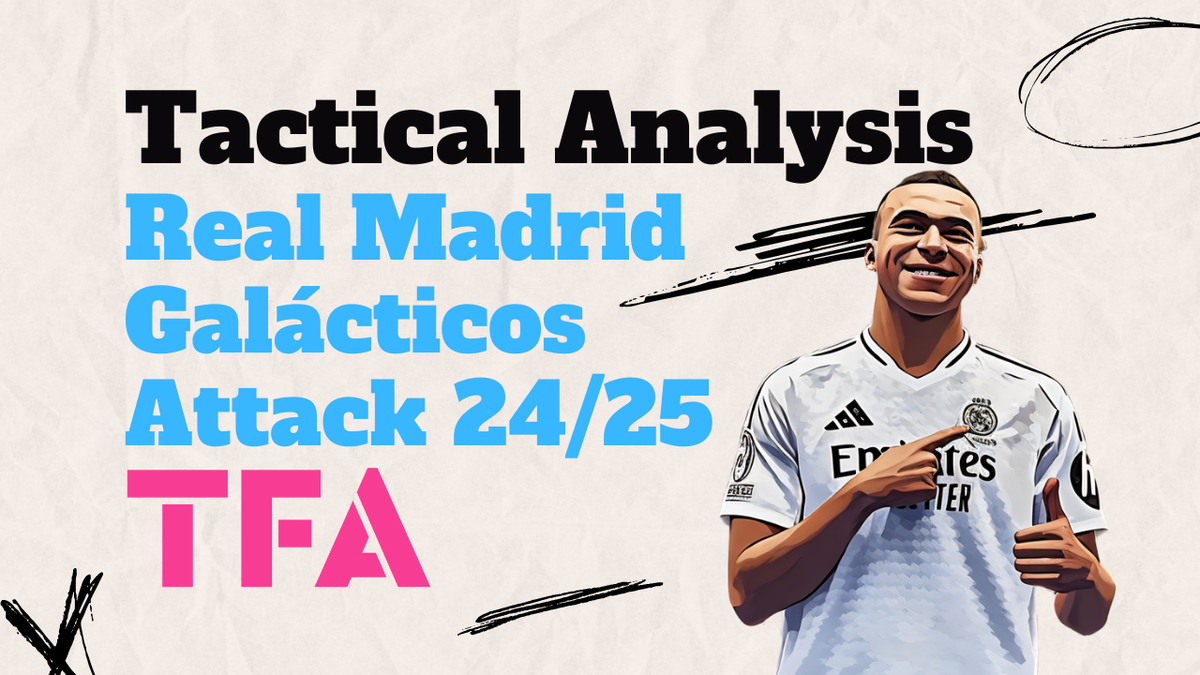
Comments